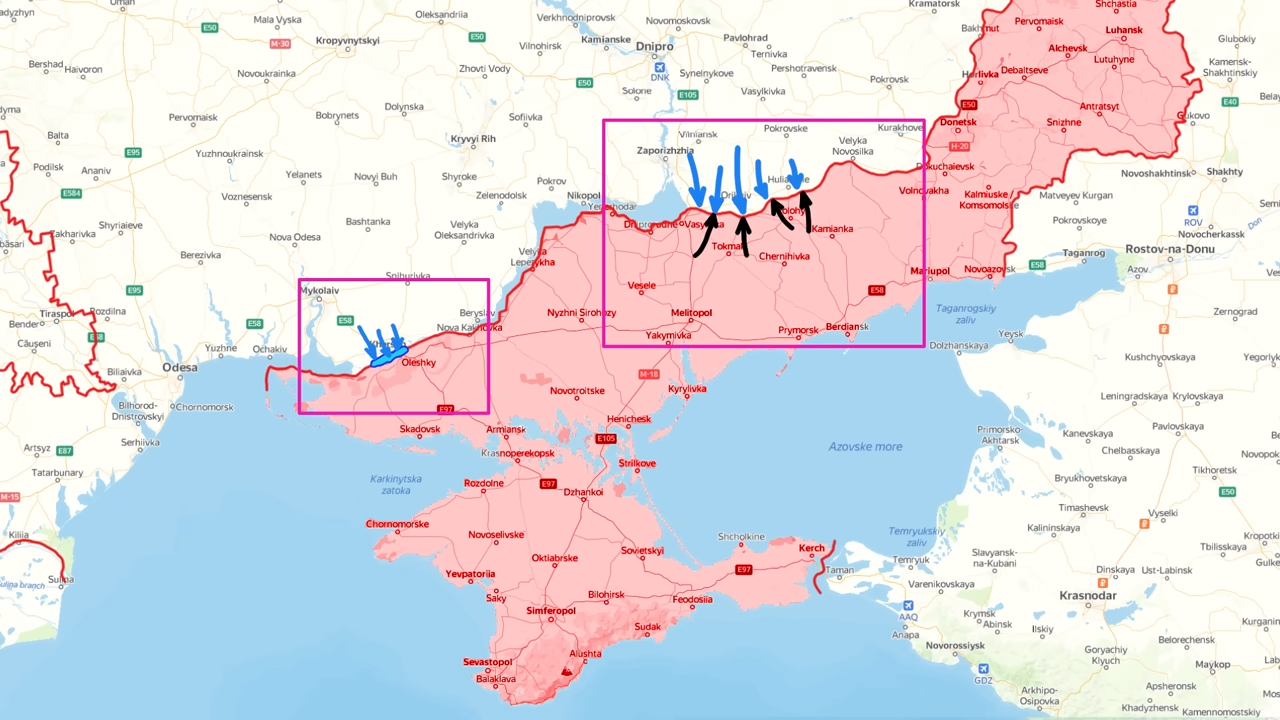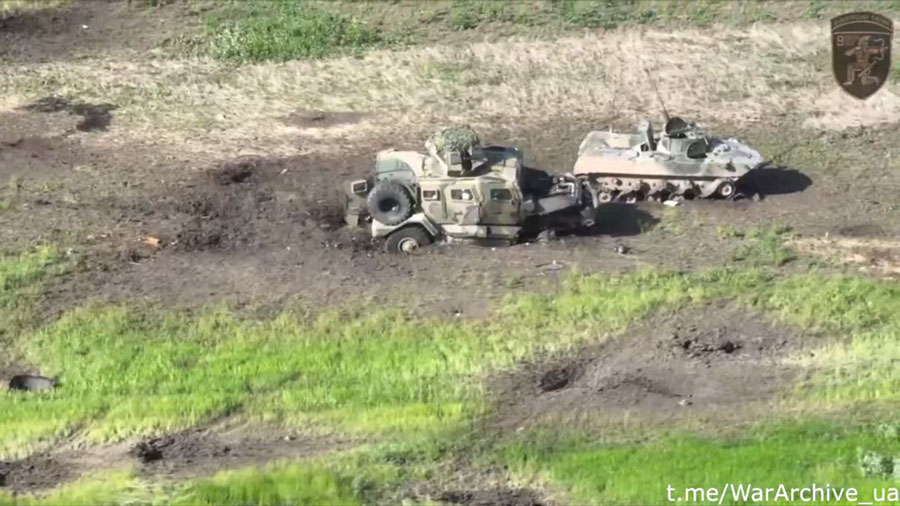Day 425: April 24
“Today, there is a lot of news from the south. Here, due to the intensification of Ukrainian operations in Zaporizhzhia Oblast, Russian forces concentrated their attention on this area and even started provoking engagements
to entice Ukrainians to attack. However, in the meantime, Ukrainians discreetly crossed the Dnipro River and established a 20-km wide bridgehead on the eastern bank, opening the way for their sabotage and reconnaissance groups to facilitate the collapse of the front line by hitting Russians in the back.”
The freshest reports suggest that Russians decided not to wait until Ukrainians launched their offensive, and started a series of attacks to be the first. As a result, Russian forces managed to increase their bridgehead in front of Dorozhnianka and Marfopil (Zaporizhzhia Oblast, – Ed.). Closer positions also allowed Russians to target Ukrainian positions in the unnamed settlement before Marfopil. The main goal of these actions is not to give Ukrainians enough time to prepare and force Ukrainians to engage the accumulated forces prematurely. And Russian sources are reporting significant concentrations of troops, namely up to 10 thousand assault men only around Huliapole.
In Kherson Oblast, Ukrainians have increased their bridgehead on the eastern bank of the Dnipro River to the point where many Russian sources started raising the alarm. Previously, Russian forces continued to occupy and establish observation posts in the residential areas of the islands in the Dnipro River’s delta. The first clashes for control over the islands started when Russians attacked the bridge to Karantynyi Island. This did not help, as Ukrainians gradually pushed Russians from the Velykyi Potiomkin Island. Shortly, Ukrainians also established control over the proximate island with a lot of places for docking.
However, the biggest news by far became that Ukrainians are present in the residential area of one of the region’s biggest and most important islands – the so-called Antonivskyi Island. Such substantial control over the eastern bank of the river gives a lot of freedom for the Ukrainian sabotage and reconnaissance groups. This 20-km wide bridgehead is already hard to control, so if Ukrainians establish control over the remaining residential areas and get closer to the mainland, then a lot of Ukrainian sabotage teams will slip through and assist in the main phase of the counteroffensive operation by destroying strategic objects and critical railways and bridges.
Several days ago, Ukrainians also made the third test of their ballistic missile system Hrim-2. The target became an unspecified object in Kerch. The rocket was shot down, but everyone understood this was just a test, and the real attack would be concealed behind a massive drone and missile strike. The most important takeaway is that Ukrainians established at least three positions for launching ballistic missiles: Odesa, Kherson, and Zaporizhzhia. The targets of the strikes were also objects in the vicinity of critical ground lines of communication, such as the Crimean Bridge and crucial railway stations in other cases.
And Ukrainians continue launching drones on Crimea as well. Today, two drones hit the Russian Black Sea Fleet in Sevastopol. Military analysts are saying that the main goal of these seemingly ineffective drone attacks in small groups is to keep their finger on the pulse and understand the current disposition and capabilities of the Russian air defense. Ideally, Ukrainian commanders should see a decrease in the air defense density because Ukrainians took significant steps to force Russians to stretch their air defense.
There will be no security in the Black Sea if Crimea remains occupied, Ukraine’s top strategist says
For example, today, Ukrainians successfully destroyed a Russian oil depot in the Luhansk region with a drone attack. Russian sources also reported that today at least 3 Ukrainian drones reached Moscow. Interestingly, they were not shot down, they just ran out of gas. Russian military panicked and temporarily closed the sky over the military bases around Moscow.
Russians have already started relocating their air defense from the front to protect the sky over Moscow. Such drone attacks aim to ensure that they continue doing it at the expense of Zaporizhzhia and Crimea. Russian analysts are warning that once Ukrainians are ready to launch the main phase of the counteroffensive, they will send swarms of drones to overwhelm Russian air defense in the region. Once the air defense is down, they will conduct extensive HIMARS strikes and use ballistic missiles Hrim-2 to take out Russian supplies right when they will need them the most.
Read also:
Why Kyiv insists on holding Bakhmut, a city of modest strategic value – opinion
- Frontline update: Ukrainians launch special-op to regain lost ground in Bakhmut
- Frontline update: Russians attempted several attacks south of semi-surrounded Avdiivka in Donbas with small gains
- Russia struggles to maintain consistent narrative justifying its war in Ukraine – UK intel
- Frontline update: Russians cut off key supply road to Ukrainians in Bakhmut








